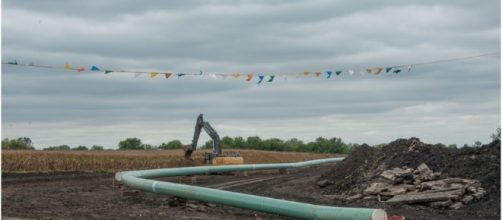The Dakota Access Pipeline has been halted and environmentalists and indigenous rights groups are thrilled that they have finally had their voices heard. Greenpeace spokesperson Lilian Molina hailed the decision to halt the project as a "monumental victory for indigenous rights and sovereignty." However, she did caution against too much optimism as there is always the possibility that the incoming "Trump Administration" might push to reopen the project.
According to a report by Buzzfeed, the pipeline will no longer "pass through the Standing Rock Reservation." The media have reported on this protest for some months, much of it highlighting the abuse the passive protesters suffered which ranged from teargassing to rubber bullets and arrests being made.
Greenpeace and other indigenous rights groups concerned about environmental and cultural impacts
It came down to The Department of the Army, who denied the $3.8 billion project late on Sunday. The Standing Rock Sioux tribe had protested against running the pipeline through their territory and under Missouri River. They were joined by other environmentalists such as Greenpeace and other indigenous rights groups. They were concerned about the environmental impact possibilities and the potential destruction of cultural heritage. The project will now have to undertake an environmental impact study and find another route for the pipeline.
Tweets from Greenpeace supporters express joy
Environmentalists on Twitter are expressing their joy at the outcome as the protests have proven that passive protest can work to change government decisions.
HUGE WIN! The DAPL has been halted thanks to the Water Protectors' dedication &... https://t.co/icoHTT2VYS by #Greenpeace via @c0nvey
— Linda L Sear (@kittykat4512) December 5, 2016
In a blog post published on Greenpeace International org, Peter Molof wrote in October how protesters had been camped out in all sorts of weather since the previous April. Winter is approaching fast and it must be a huge relief for the protesters that they can now winter in warmth. The Standing Rock Sioux and their allies have been protesting because the Dakota Access Pipeline would have carried 500,000 barrels of oil a day from North Dakota to Illinois in the United States.

